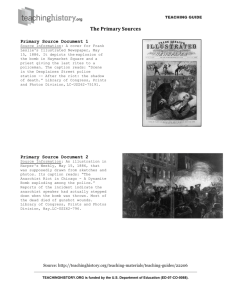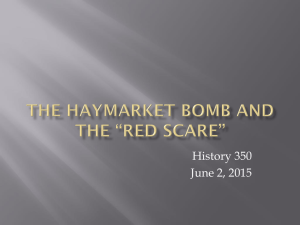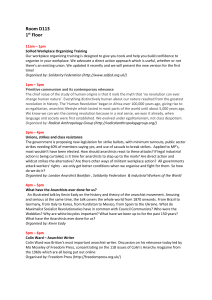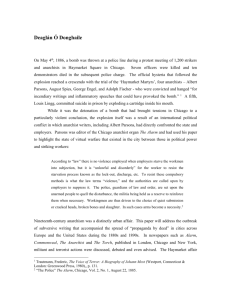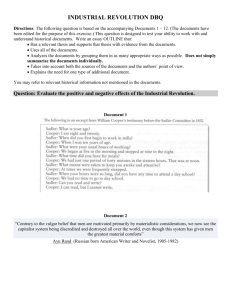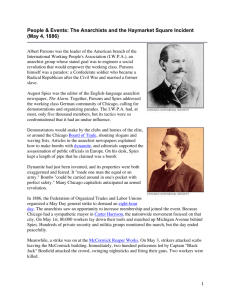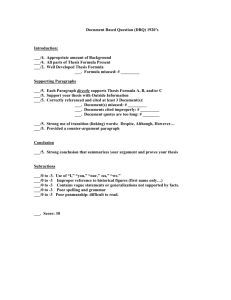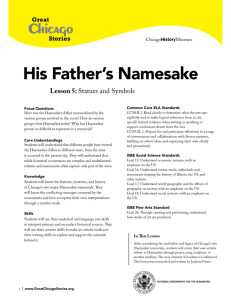Background Essay: The Haymarket Square
advertisement
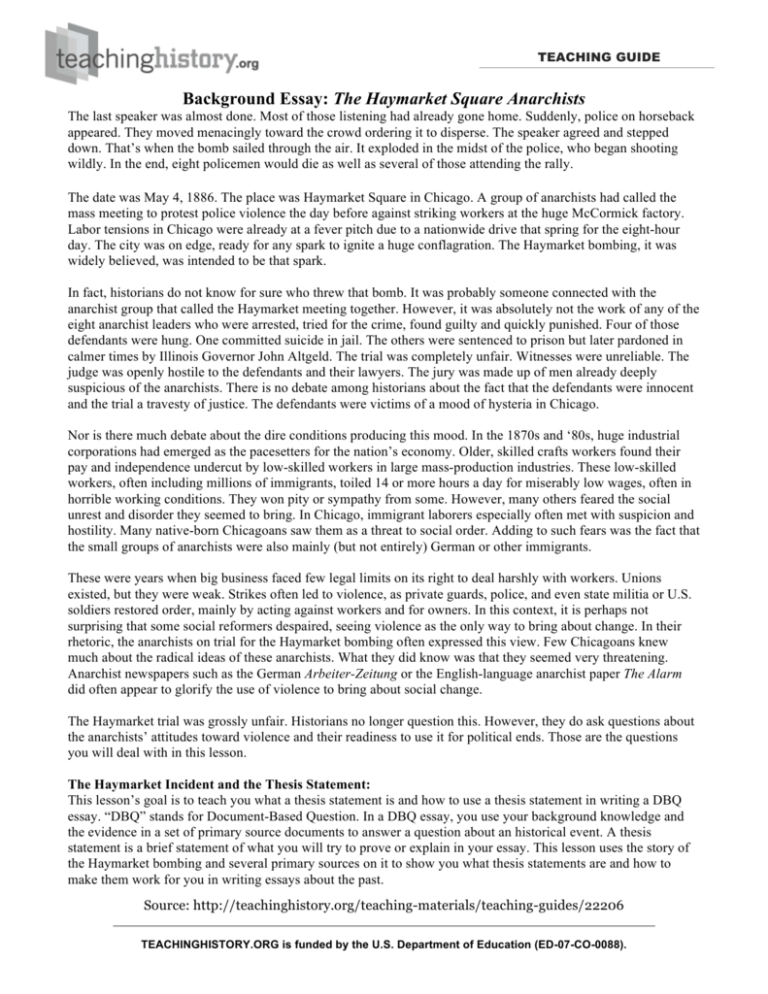
TEACHING GUIDE Background Essay: The Haymarket Square Anarchists The last speaker was almost done. Most of those listening had already gone home. Suddenly, police on horseback appeared. They moved menacingly toward the crowd ordering it to disperse. The speaker agreed and stepped down. That’s when the bomb sailed through the air. It exploded in the midst of the police, who began shooting wildly. In the end, eight policemen would die as well as several of those attending the rally. The date was May 4, 1886. The place was Haymarket Square in Chicago. A group of anarchists had called the mass meeting to protest police violence the day before against striking workers at the huge McCormick factory. Labor tensions in Chicago were already at a fever pitch due to a nationwide drive that spring for the eight-hour day. The city was on edge, ready for any spark to ignite a huge conflagration. The Haymarket bombing, it was widely believed, was intended to be that spark. In fact, historians do not know for sure who threw that bomb. It was probably someone connected with the anarchist group that called the Haymarket meeting together. However, it was absolutely not the work of any of the eight anarchist leaders who were arrested, tried for the crime, found guilty and quickly punished. Four of those defendants were hung. One committed suicide in jail. The others were sentenced to prison but later pardoned in calmer times by Illinois Governor John Altgeld. The trial was completely unfair. Witnesses were unreliable. The judge was openly hostile to the defendants and their lawyers. The jury was made up of men already deeply suspicious of the anarchists. There is no debate among historians about the fact that the defendants were innocent and the trial a travesty of justice. The defendants were victims of a mood of hysteria in Chicago. Nor is there much debate about the dire conditions producing this mood. In the 1870s and ‘80s, huge industrial corporations had emerged as the pacesetters for the nation’s economy. Older, skilled crafts workers found their pay and independence undercut by low-skilled workers in large mass-production industries. These low-skilled workers, often including millions of immigrants, toiled 14 or more hours a day for miserably low wages, often in horrible working conditions. They won pity or sympathy from some. However, many others feared the social unrest and disorder they seemed to bring. In Chicago, immigrant laborers especially often met with suspicion and hostility. Many native-born Chicagoans saw them as a threat to social order. Adding to such fears was the fact that the small groups of anarchists were also mainly (but not entirely) German or other immigrants. These were years when big business faced few legal limits on its right to deal harshly with workers. Unions existed, but they were weak. Strikes often led to violence, as private guards, police, and even state militia or U.S. soldiers restored order, mainly by acting against workers and for owners. In this context, it is perhaps not surprising that some social reformers despaired, seeing violence as the only way to bring about change. In their rhetoric, the anarchists on trial for the Haymarket bombing often expressed this view. Few Chicagoans knew much about the radical ideas of these anarchists. What they did know was that they seemed very threatening. Anarchist newspapers such as the German Arbeiter-Zeitung or the English-language anarchist paper The Alarm did often appear to glorify the use of violence to bring about social change. The Haymarket trial was grossly unfair. Historians no longer question this. However, they do ask questions about the anarchists’ attitudes toward violence and their readiness to use it for political ends. Those are the questions you will deal with in this lesson. The Haymarket Incident and the Thesis Statement: This lesson’s goal is to teach you what a thesis statement is and how to use a thesis statement in writing a DBQ essay. “DBQ” stands for Document-Based Question. In a DBQ essay, you use your background knowledge and the evidence in a set of primary source documents to answer a question about an historical event. A thesis statement is a brief statement of what you will try to prove or explain in your essay. This lesson uses the story of the Haymarket bombing and several primary sources on it to show you what thesis statements are and how to make them work for you in writing essays about the past. Source: http://teachinghistory.org/teaching-materials/teaching-guides/22206 TEACHINGHISTORY.ORG is funded by the U.S. Department of Education (ED-07-CO-0088).
